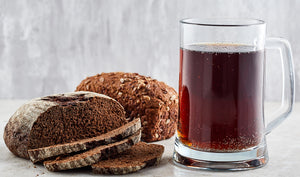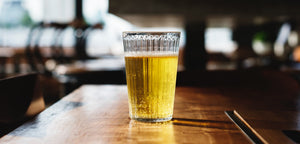Everywhere you look, there’s some kind of sour beer popping out of every brewery. Brewers are getting pretty creative with it too. We’re seeing everything from a funky Lambic, to a face puckering bourbon barrel aged mojito Jalapeno lime cheesecake ale*. These thirst quenching ales have recently proven themselves to be one of the summer's most popular beers. So let’s break down how you can make your own at home.
Controlled Infection
Most home brewers follow very strict sanitation practices to avoid infection. While this is still the case with sour beers, a controlled infection is what gives your beer that tart flavour we love. Beers can be infected by two main types of bacteria:
- Acetobacter (the bad bacteria): This gives your beer tons of off-flavours, like that acetic acid vinegar flavour most home brewers have experienced.
- Lactobacillus (the good bacteria): This bacteria gives that clean sour flavour that we’re looking for. This controlled infection is called kettle souring.
Fast Souring
For some sour beers, it could take months to come out with a clean finished product. However, there is a form of “fast souring” that proves useful for a quick sour beer turnaround.
When fast souring, we want to maximize the the bacterias that produce lactic acid (lactobacillus). This way your beer will have a sour taste even before it starts fermenting.
Brew something simple that is low in alcohol so the bacteria has a better chance to convert the sugars into lactic acid. Something like a Berliner Weisse would be a good candidate for a fast sour. Traditional souring consists of brewers fermenting the beer before introducing bacteria and waiting for it to start souring. This process takes a minimum of 18 months for the beer to start tasting drinkable, and will improve with age. We know most homebrewers don't have the time (or patience) for that, so we’re going to kettle sour.
The Process
Start off by mashing and sparging your grains normally. Once you have finished, transfer it to your boil kettle. This is where things get interesting.
Boil for about 15 minutes to get rid of any bacteria that may be living in there, and cool it down to about 110 ºC. Now we want to bring the pH down to 4.5. You are going to need a pH meter for this. Just take a pH reading and add small amounts of lactic acid until your pH drops to 4.5. once you do that, and pitch a large starter of lactobacillus (or a couple hand fulls of un-milled 2-row) and hold the temperature between 100 ºC - 120 ºC for 12 - 48 hours. The longer you hold it at this temperature, the more sour flavour will develop.
You can measure how sour it is by measuring the pH. Once the pH of your wort reaches 3.5, your beer will have a decent tartness. At this point you can boil your wort, add hop additions as usual (remember to keep it around 12 IBU’s), chill your wort, pitch your yeast and ferment as usual.
*This beer doesn't actually exist, but if you brew it, please send us a bottle.



